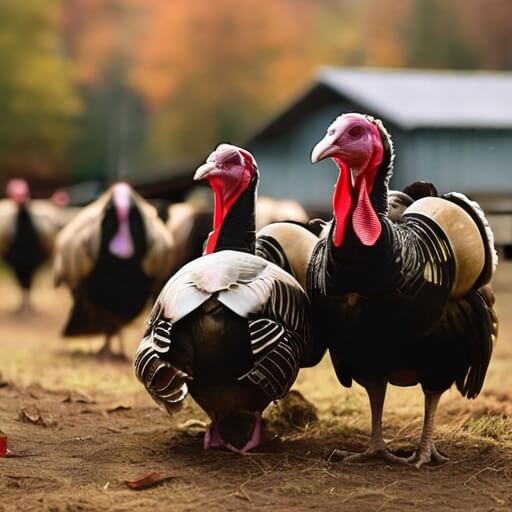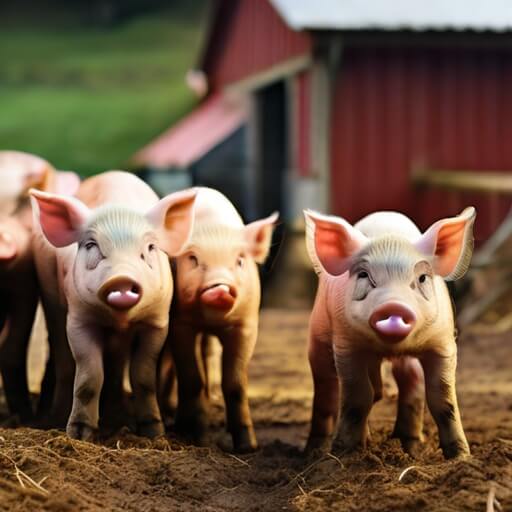Off-Grid Living and Food Preservation
Table of Contents
- Challenges of Food Preservation in Off-Grid Living
- Effective Off-Grid Food Preservation Techniques
- Additional Considerations for Off-Grid Food Preservation
- Conclusion
Food security is a paramount concern for off-grid living. Without access to grocery stores or reliable power for refrigeration, the ability to preserve your harvest becomes essential. This blog post will delve into effective food preservation methods that are well-suited for off-grid living, focusing on techniques that minimize reliance on electricity. By implementing these methods, you can enjoy the bounty of your own garden or local sources, ensuring a secure and delicious food supply throughout the year.
Challenges of Food Preservation in Off-Grid Living
While refrigeration and freezing are the cornerstones of food preservation in modern society, they present significant challenges for off-grid living:
-
Electricity Dependence: Both refrigerators and freezers rely heavily on electricity to maintain constant cool temperatures. This poses a problem for those with limited or no access to a reliable power grid. Off-grid power sources like solar panels or generators can be expensive to set up and maintain, and may not always guarantee a consistent electricity supply.
-
Energy Consumption: Refrigerators and freezers are some of the most energy-consuming appliances in a household. For off-grid dwellers aiming to minimize their environmental footprint and conserve resources, relying heavily on these appliances can be counterintuitive.
-
Limited Capacity: Refrigerators and freezers have a finite storage capacity. This can be restrictive for those who produce a large amount of food through gardening or hunting, or for those who want to preserve food for extended periods.
Challenges of Limited Electricity:
Off-grid living often comes with limited or no access to electricity, creating additional hurdles for food preservation:
-
Unreliable Power: Even with alternative power sources like solar panels, factors like weather can disrupt electricity generation. This inconsistency can threaten the safety of frozen foods that thaw and refreeze, or disrupt the controlled cool temperatures needed for proper refrigerator storage.
-
Maintenance Needs: Generators and other off-grid power sources require regular maintenance and fuel supplies, which can add extra burdens and costs.
-
Appliance Limitations: Without electricity, many modern food preservation appliances like dehydrators or vacuum sealers become unusable.
In conclusion, while refrigeration and freezing are effective food preservation methods, their dependence on electricity makes them less than ideal for off-grid living. The limitations of consistent power and the energy consumption of these appliances necessitate exploring alternative techniques that are more compatible with a self-sufficient lifestyle.
Effective Off-Grid Food Preservation Techniques
Drying
When it comes to off-grid food preservation, drying shines as a champion for its simplicity and minimal reliance on electricity. Here’s why drying is a perfect fit for this lifestyle:
-
Low-Tech and Easy: Drying is one of the oldest and simplest food preservation methods. It requires minimal equipment and can be done with readily available resources, making it ideal for off-grid living.
-
Energy Efficient: Sun drying, the traditional method, harnesses the power of the sun for dehydration, completely eliminating the need for electricity. Even dehydrators can be powered by alternative sources like solar panels.
-
Space-Saving: The drying process removes a significant amount of water weight from the food, resulting in a compact and lightweight product. This translates to easier storage and less space required compared to storing fresh produce.
-
Preserves Nutrients: Drying concentrates the flavor and nutrients of the food, making it a great way to preserve vitamins and minerals, especially for fruits and vegetables.
Drying Techniques:
There are two main ways to dry food for off-grid preservation:
-
Sun Drying: This traditional method involves slicing food thinly and spreading it on screens or mesh trays in direct sunlight for several days. This technique works best in hot, dry climates with good air circulation.
-
Dehydrating: Dehydrators are appliances that use controlled low heat and air circulation to remove moisture from food. While they typically require electricity, some models can be powered by solar panels, making them a viable option for off-grid living. Dehydrators offer more control over the drying process and can be used in various weather conditions.
Foods Perfect for Drying:
A wide variety of foods are excellent candidates for drying, including:
- Fruits: Apples, bananas, mangoes, berries, peaches (all great for snacking or baking later)
- Vegetables: Tomatoes, peppers, onions, mushrooms (perfect for adding flavor to soups and stews)
- Herbs: Basil, oregano, parsley, thyme (add a burst of flavor to any dish)
By incorporating drying techniques into your off-grid food preservation strategy, you can enjoy the benefits of homegrown produce or foraged foods throughout the year, all while minimizing your reliance on electricity and maximizing your self-sufficiency.
Canning
Canning is another effective method for preserving food that can be adapted for off-grid living, but with important considerations:
-
Water Bath Canning: This method is suitable for high-acid foods like fruits, pickles, and jams. It involves packing food in sterilized jars and submerging them in boiling water for a specific time to kill bacteria. While water bath canning requires a stovetop heat source, it doesn’t require electricity, making it a good option for off-grid living.
-
Pressure Canning (Caution): For low-acid foods like vegetables, meat, and fish, pressure canning is necessary. A pressure canner traps steam, creating high temperatures that destroy bacteria that can cause foodborne illness. However, pressure canning typically requires a stovetop heat source.
Safety First: Canning improperly can lead to foodborne illness. It’s crucial to follow tested canning recipes and procedures from reputable sources like the National Center for Home Food Preservation (https://nchfp.uga.edu/) to ensure safe food storage.
Off-Grid Considerations:
While pressure canning can be a valuable tool, using a pressure canner off-grid presents additional challenges:
- Heat Source: Pressure canners require a reliable heat source like a stovetop. Off-grid dwellers may utilize camp stoves or alternative heating methods. Important Note: Using a pressure canner with an off-grid heat source like a camp stove requires extreme caution and expert guidance. Improper use can lead to safety hazards. Consult with a canning expert before attempting pressure canning off-grid to ensure you understand the necessary safety protocols for your specific setup.
Remember: Safety is paramount when canning. If you are unsure about any aspect of the process, especially when using a pressure canner off-grid, err on the side of caution and consult with a qualified canning expert.
Fermentation
Fermentation is a natural process where microorganisms like bacteria and yeast break down sugars in food. This breakdown not only creates unique flavors and textures, but also acts as a powerful preservation method, making it a valuable tool for off-grid living:
-
Preserves Naturally: The fermentation process produces organic acids that inhibit the growth of harmful bacteria, extending the shelf life of food without relying on electricity or refrigeration.
-
Nutrient Boost: Fermentation can increase the availability of certain vitamins and minerals in foods, making them even more nutritious.
-
Probiotic Powerhouse: The fermentation process creates probiotics, beneficial bacteria that contribute to gut health and immunity. Fermented foods like sauerkraut and kimchi are excellent sources of probiotics.
The Basic Steps of Vegetable Fermentation:
Vegetable fermentation is a surprisingly simple process that can be done at home with minimal equipment:
-
Prepare Your Veggies: Choose fresh, clean vegetables suitable for fermentation, such as cabbage, carrots, or cucumbers.
-
Create a Brine: Dissolve salt in water to create a brine solution. Salt is essential for the fermentation process and helps control unwanted bacteria.
-
Pack and Weight: Pack the vegetables into a clean jar and pour the brine solution over them, ensuring all vegetables are submerged. Use a weight, like a fermentation weight or a clean stone, to keep the vegetables below the brine level.
-
Fermentation Magic: Store the jar in a cool, dark place for several days or weeks. The fermentation process will begin, and bubbles may appear as the bacteria and yeast break down the sugars in the vegetables.
-
Enjoy or Store: Once the vegetables have reached your desired level of fermentation, you can enjoy them fresh or store them in the refrigerator for extended shelf life.
By harnessing the power of fermentation, you can preserve your harvest naturally, create delicious and probiotic-rich foods, and minimize your reliance on electricity for food storage – a perfect fit for the off-grid lifestyle.
Curing
Curing is a traditional preservation method that utilizes salt and/or smoke to inhibit bacterial growth and extend the shelf life of meat and fish. Here’s a basic overview:
-
The Power of Salt: Salt draws out moisture from the food, creating an environment inhospitable to bacteria. This dehydration process slows down spoilage and enhances flavor.
-
Smoke Signals: Smoking adds a distinct flavor profile and further inhibits bacterial growth by introducing additional antimicrobial compounds. Smoke can be cold-smoked (for a longer drying and preservation effect) or hot-smoked (for a cooked product).
Traditional Curing and Nitrites/Nitrates (Caution):
Traditionally, curing often incorporates nitrites or nitrates. These compounds contribute to the characteristic pink color of cured meats and can enhance flavor and stability. However, there have been some health concerns raised regarding potential links between nitrites/nitrates and certain cancers.
Safety First: While curing can be a valuable technique, it’s crucial to prioritize safety. Improper curing practices can lead to botulism, a potentially fatal foodborne illness. It’s highly recommended to consult with a qualified meat curing expert who can guide you through the process, ensuring you use the correct ingredients, methods, and safety protocols for your chosen curing technique.
Off-Grid Considerations:
Curing can be adapted for off-grid living, but remember:
-
Salt and Smoke Sources: Ensure you have access to a reliable source of high-quality curing salt and a suitable smoking setup (smokehouse or smoker).
-
Temperature Control: Some curing methods require specific temperature control, which can be challenging in off-grid settings.
Curing is a fascinating preservation method with a long history. While it can be adapted for off-grid living, prioritize safety by seeking expert guidance and ensuring you have the proper knowledge and equipment.
Root Cellaring
For off-grid dwellers seeking a natural and energy-efficient way to store their harvest, look no further than the root cellar. This traditional storage method utilizes the earth’s insulating properties to create a cool, humid environment ideal for preserving root vegetables and certain fruits:
-
Nature’s Refrigerator: Built partially or entirely underground, root cellars leverage the constant temperature of the earth to maintain a cool environment, mimicking the function of a refrigerator, but without relying on electricity.
-
Humidity Matters: Root cellars also maintain a naturally high humidity level, which helps prevent root vegetables and some fruits from drying out and withering. This reduces spoilage and extends their shelf life.
Creating the Perfect Root Cellar Environment:
To ensure your root cellar functions optimally, aim to maintain these ideal conditions:
-
Temperature: A cool and consistent temperature between 32°F and 40°F (0°C to 4.5°C) is ideal. This cool environment slows down the ripening process and reduces spoilage.
-
Humidity: A high humidity level of 85% to 95% is crucial. This helps prevent moisture loss from your stored produce and keeps them fresh and crisp.
By maintaining these conditions, your root cellar acts as a natural pantry, allowing you to enjoy the bounty of your harvest for extended periods without relying on modern appliances.
Additional Considerations for Off-Grid Food Preservation
Packaging
Once you’ve invested time and effort into preserving your food through drying, fermentation, canning, or curing, selecting the proper storage containers becomes crucial. Here are some excellent options for off-grid living:
-
Classic Glass Jars: Glass jars are a timeless choice for storing a variety of preserved foods. They are non-porous, meaning they won’t absorb odors or flavors, and they allow for easy visual inspection of your stored goods. Glass jars are perfect for storing dried fruits, vegetables, fermented vegetables like sauerkraut and kimchi, jams, and canned goods (as long as they are processed through the water bath canning method).
-
Mylar Bags with Oxygen Absorbers (Expertise): For long-term storage of dried foods like dehydrated vegetables, fruits, or herbs, Mylar bags paired with oxygen absorbers are a fantastic option. Mylar is a metallized polyester film that creates a significant barrier against moisture, light, and oxygen. Oxygen absorbers further eliminate any remaining oxygen within the bag, creating an environment that minimizes spoilage and extends shelf life. Note: When using Mylar bags, ensure you understand proper sealing techniques to maximize their effectiveness.
Additional Considerations:
- Size: Choose container sizes that are appropriate for the amount of food you are storing. Using properly sized containers minimizes wasted space and reduces the risk of spoilage due to excess air exposure.
- Durability: Opt for containers made from durable materials that can withstand repeated use and potential harsh environmental conditions that may be present in off-grid living situations.
- Light Protection: For light-sensitive foods like dried herbs or spices, consider using opaque containers or storing them in a location with minimal light exposure.
By selecting the right storage containers, you can ensure your off-grid pantry remains well-stocked with delicious and nutritious preserved foods.
Pest Control
Even the most meticulously preserved food can attract unwanted pests. Here are a couple of natural methods to consider for off-grid living:
-
Bay Leaves: These fragrant leaves are a natural deterrent for some insects, including moths and weevils. Place whole bay leaves in your storage containers or around shelves to help keep these pests at bay.
-
Diatomaceous Earth (Caution): Diatomaceous earth (DE) is a powder made from fossilized algae. It can be sprinkled around storage areas or on shelves to deter crawling insects. Important Note: While generally safe, DE can irritate the lungs if inhaled. Use caution when applying and wear a mask if necessary.
These are just a few natural methods to deter pests. Remember, prevention is key. Maintain good hygiene in your storage areas, clean up spills promptly, and rotate your stock regularly to minimize the risk of attracting unwanted guests.
Conclusion
This exploration of off-grid food preservation methods has unveiled a treasure trove of techniques to ensure a secure and delicious food supply, all while minimizing reliance on electricity. Here’s a quick recap:
-
Embrace Low-Tech Methods: Drying, fermentation, and root cellaring are all effective preservation methods that require minimal or no electricity, making them ideal for off-grid living.
-
Canning with Caution: Water bath canning is suitable for high-acid foods, but pressure canning requires a reliable heat source and strict adherence to safety guidelines. Consult a canning expert if unsure.
-
Curing Expertise: Curing meats and fish offers long-term storage, but prioritize safety by seeking expert guidance due to the potential risks involved.
-
Storage Savvy: Glass jars and Mylar bags with oxygen absorbers are excellent choices for storing your preserved bounty.
-
Natural Pest Control: Bay leaves and diatomaceous earth can be used as natural deterrents against unwanted pests in your off-grid pantry.
Remember: Planning, research, and following best practices are paramount for safe and effective food preservation. Don’t hesitate to consult with experts like qualified canners or meat curers for specific guidance.
Ready to Embrace Self-Sufficiency?
Take the first step towards a self-sufficient lifestyle by exploring these off-grid food preservation methods. With a little planning and effort, you can enjoy the satisfaction of preserving your harvest and creating a well-stocked pantry, all while minimizing your dependence on external resources. Let’s embrace the bounty of nature and the power of self-sufficiency!


